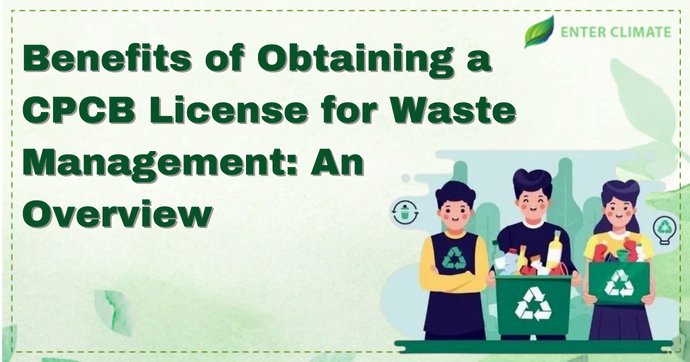How to apply for a Pollution Board certificate for milk processing units?
 30 Dec, 2022
30 Dec, 2022 
A milk processing unit processes raw milk through physical processes like pasteurisation, standardisation, homogenisation and packaging. Other subsequent stages of processing can be done within the processing unit to produce different dairy products like ghee, curd, cheese, ice cream, butter etc. After processing, when the milk is ready to be consumed, it is packaged and transported. Here the hygiene and quality of the product are paramount. Along with it, the management of waste generated by milk processing is also mandatory. Different techniques are implemented to treat raw milk into the desired product. Therefore, for the processing of milk in these units, a Pollution Control Board certificate is required before starting the processing. In this article, we will understand the step-by-step process to apply for a Pollution Board certificate for milk processing units.
Milk Processing Plants in India
Every stage of the processing is monitored for quality and hygiene and follows the standard operating procedure mandated by law. Different packaging, like cartons, glass, pouches, and bottles, are used to deliver the final product to the consumer. Producers of cultured milk products, such as yoghurt and cheese, rely on bacteria cultures (starters) to control the product’s acidity, flavour, consistency and aroma. Milk processing units can be broadly categorised into the following types.
Milk Chilling plants: These involve the collection of milk from villages, chilling it to 3-4 degrees and transporting it to the processing unit for further processing and manufacture of dairy products
Market Milk Plants: It involves procurement of milk, pasteurisation, and homogenisation, and lastly, packing it for different brands (standard, toned and double-toned milk) and supplying it to the consumers.
Composite Milk Processing Plants: The project includes the collection of milk and processing into market milk and products like milk powder, cheese, butter, ghee, etc.
Stages in Milk Processing in the Processing Plants
Easy setup of processing plants, procuring and processing milk through hygienic methods is possible today with the technologies developed in the industry. However, the unit will need a Pollution Board certificate for milk processing before starting its operation.
Receiving Raw Milk and its Storage: Once the raw milk arrives at the processing plant, the quality team tests it to ensure it meets applicable standards. Large vertical silo tanks are used to store untreated raw milk.
Pasteurising – The stored milk is heated to a specific temperature to destroy the pathogenic microorganisms. Pasteurisation makes milk safe to drink (and also helps to prolong its shelf-life). It is essential to separate bacteria and other contaminants from the milk to make it fit for consumption.
Separation and clarification: Separating cream from milk is a process that uses centrifugal forces to separate the cream from the skim milk so it can be used in other products. Clarification separates particles such as somatic cells, sediment and some bacteria from the milk.
Standardisation and Homogenising – Standardisation is the process of adjusting milk fat content to a specified value. At the same time, homogenisation of milk is done to make milk consistent by breaking down heavier particles, such as fat globules, into tiny particles.
How to start a milk processing unit
Today, substantial assistance to processing plants to procure and process milk in hygienic methods within a short period is available after obtaining a Pollution Board certificate for milk processing. However, the following requirements must be decided upon beforehand to start a processing unit.
Land: Ample space is required for buildings and machine setup, parking of transport vehicles, empty cans and factoring the scope of future expansion. By a rough estimate, a processing plant on two acres of land can handle about 10000 litres of milk per day.
Suitable Location: The location of the site should have proximity to the source of milk collection points as well as to the road and rail services and other requirements like water, electricity, social infrastructure, etc.
Machinery and utilities: The machinery for the processing plant should be as per the standards specified by law. Many states of art infrastructures are present in the industry that reduces the time for processing. With the correct type of applications, it is easier for the milk processing units to deliver quality products on time. Utilities will include the availability of power, water (steam), fuel, transport vehicles etc.
Staffing: the total requirement of the workforce depends on the operations involved, the quantity of milk handled, and the level of automation. Various technologies are being integrated with the automation process to enhance processing plants. Different automation applications are combined into a single application through modern technologies.
Licences and Permits from the government
- FSSAI License
- BIS Certificate
- Trade License from the local authorities
- SSI or MSME Registration
- GST registration
- CGWA NOC for Groundwater supply.
- Tie-up with TSDF Operator or HWM Authorisation
- Pollution Board NOC
How to apply for pollution control board NOC
The applicant must visit the Online portal or the online consent management and monitoring system (OCMMS) of the concerned State Pollution Control Board and apply. The steps in the application process are as follows.
Step 1: Any new applicant must register at the online portal using their details and generate a password that will be mailed to the applicant. Using the received User id and password, the applicant must log into the portal of the OCMMS[1].
Step 2: After logging into the web portal, the applicant must fill out the Common Application form and create a unit.
Step 3: At the next step, the applicant must select “Apply for Certificate / NOC / Permission”, then choose the unit and after selecting the Department as the “Pollution Control Board”(of the respective state/ Union Territory), choose the option of service of “Consent to Establish under Air and Water” then click on proceed. The applicant must then fill in other relevant details and submit the application form.
Step 4: Go to the “Pay consolidated Fee” option and pay the required fee.
Step 5: After successful fee payment, the application will be sent to the regional office of the SPCB /PCC.
Step 6: The Regional officer will process the application. and necessary inspection is done by Board. In case of any query or objection, the Board will raise a query within seven days of applying. The applicant must reply to the query within the stipulated time.
Documents Required for applying for Pollution Board Certificate for milk Processing
Consent to Establish (CTE) Pollution Board certificate for milk processing
- Duly filled application
- Signed Undertaking
- Site Plan/layout plan
- Detailed Project Report with total investment.
- Details of point sources of industrial discharge like air emission, solid waste or hazardous waste.
- Details of the manufacturing process, including a list of machinery, the capital cost of land, building, and machinery and details of finished products
- Source of water, water balance in the area and quantity required.
- Land documents such as rent /lease agreement
- Industry Registration
- Consent fee (as applicable)
Consent to Operate (CTO) Pollution Board certificate for milk processing
- Duly filled application
- Balanced Sheet by CA
- Copy of CTE
- Details of water and air pollution control devices (their capacity, location on the premises and exit points of the discharge)
- Laboratory analysis report of the trade effluent and emissions.
- Copy of any environmental clearance or permission required from the State Government.
- Any other Document specified on the portal.
The following table illustrates the stages of registration and site inspection.
|
Application and Fee Submission The applicant has to submit a complete formunder the red category along withthe required documents mentioned above and the fee.The regional officer will scrutinise the documents and send aquery to the applicant if needed. |
Document Scrutiny and Inspection of the unit A site Inspection will be carried out by an inspecting officer who will visit the unit and check the installed pollution control measures as per the standards set by the respective Board for the milk processing unit and other declarations made by the applicant in the form. |
Issue of NOC Based on the recommendations in the inspection report, CTE and, subsequently, CTO will be granted. The application for Pollution Board Certificate for Milk Processing unit will be processed within 120 of receipt of the completed applicationand after a satisfactory inspection report. |
Responsibilities of Dairy Processing unit Operator
With the development of automated processing plants, it is easier to monitor the quality. However, the following records must be maintained by the unit’s operator.
- The business owner must maintain ETP Compliance Records along with details of discharge Effluents.
- A record of raw material traceability for milk being received must be prepared.
- The owner must ensure the Quality and hygiene of the processing area, Lab, machinery and equipment.
- Test records, such as compositional analysis for raw milk, microbial test records etc., must be maintained.
- Testing reports for chemical tests, microbiological tests pertaining to milk and milk products, food ingredients, additives etc., along with corrective action (CAPA), and Internal and external audit records must be maintained.
- Testing records of Packaging materials and the records of samples picked up by FSSAI/State FDA authorities must also be maintained.
Conclusion
As milk processing is categorised in the Red list in the industrial categories maintained by CPCB, the unit will require a Pollution Board certificate for milk processing from their concerned State Pollution Control Board or Pollution Control Committee. The Pollution Board certificate, also known as Consent Certificate or Pollution No objection Certificate, is issued under the provisions of the Air Act and the Water Act. There are some mandatory post-compliance associated with the Pollution Board certificate for milk processing, and the concerned SPCB ensures compliance with the mandated provisions by regular monitoring of the quarterly and annual compliance reports submitted by the milk processing unit.













